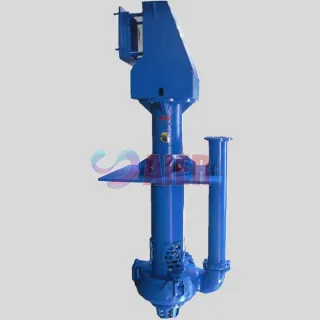Dec . 07, 2024 10:10 Back to list
submersible pump factory
Exploring Submersible Pump Factories A Deep Dive into Technology and Manufacturing
Submersible pumps are a vital technology in various industries, including agriculture, construction, and municipal water management. These pumps are designed to function underwater and are often utilized for draining water, irrigation, and sewage systems. The manufacturing of these pumps is a complex process that requires precision engineering, high-quality materials, and advanced technology. In this article, we will explore the intricacies of submersible pump factories and discuss the essential elements that contribute to the production of these indispensable devices.
Understanding Submersible Pumps
Before delving into the manufacturing process, it is crucial to understand what submersible pumps are and how they operate. Unlike standard pumps that draw water from above ground, submersible pumps are submerged in the liquid they are pumping. This design allows for higher efficiency in moving liquids from one location to another. Typically used in applications that require moving large volumes of water, these pumps are often found in wells, water reservoirs, and industrial sites.
The two primary types of submersible pumps are centrifugal pumps and positive displacement pumps. Centrifugal pumps use rotational energy to move fluids, making them ideal for applications that require consistent flow rates. On the other hand, positive displacement pumps push fluids through the system, making them more effective for high-viscosity liquids.
The Manufacturing Process
The manufacturing process of submersible pumps begins with the selection of high-quality raw materials. Components like stainless steel, cast iron, and thermoplastics are common choices due to their durability and resistance to corrosion. Each material serves a specific purpose, with stainless steel often used for parts that require high strength and corrosion resistance.
1. Design and Engineering The first phase of manufacturing is design and engineering. Engineers utilize sophisticated software to create detailed designs of the pump. Factors such as fluid dynamics, pressure, and temperature are modeled to ensure the pump performs optimally under various conditions.
2. Machining and Fabrication Once the design is approved, the raw materials undergo machining and fabrication. This process includes cutting, drilling, welding, and assembling different components. Advanced CNC (Computer Numerical Control) machines are often employed to achieve precise dimensions and tolerances.
submersible pump factory

3. Assembly After individual components are fabricated, they are moved to the assembly line. Skilled technicians assemble the various parts, such as the motor, impeller, and casing. Care is taken to ensure that seals and gaskets are properly fitted to prevent leaks.
4. Testing Quality control is a crucial step in the manufacturing process. Each assembled pump goes through rigorous testing to ensure it meets safety standards and performance specifications. Testing can involve submersible trials, pressure testing, and vibration analysis to simulate various operational conditions.
5. Finishing Touches After successful testing, the pumps are cleaned and coated to enhance durability and corrosion resistance. Many factories apply a protective paint or coating to extend the lifespan of the pumps in harsh environments.
Innovation and Sustainability
Submersible pump factories are increasingly focusing on innovation and sustainability in their manufacturing processes. With the global push for greener technologies, many manufacturers are investing in research and development to create energy-efficient pumps. These advancements not only save energy but also reduce operating costs for end-users.
Moreover, factories are adopting sustainable manufacturing practices, including recycling waste materials and minimizing water usage. This shift not only benefits the environment but also appeals to consumers who are becoming more conscious of the ecological impact of their purchasing decisions.
Conclusion
Submersible pump factories play a pivotal role in the production of essential equipment that supports numerous industries worldwide. Through a combination of advanced engineering, precision manufacturing, rigorous testing, and a focus on innovation, these factories ensure that submersible pumps are efficient, reliable, and sustainable. As industries continue to evolve, the demand for high-quality submersible pumps will only increase, emphasizing the importance of ongoing advancements within the manufacturing sector. Future developments will likely herald new technologies that enhance pump performance while minimizing environmental impact, solidifying the role of submersible pumps in a sustainable future.
-
High Quality Slurry Pump Seals Reliable China Suppliers & Manufacturers
NewsJun.24,2025
-
High Quality Portable Submersible Slurry Pump Supplier & Manufacturer from China
NewsJun.10,2025
-
Slurry Pump Parts Manufacturer – High Quality Rubber Spare Parts from China
NewsJun.10,2025
-
High Quality 1/3 HP Submersible Sump Pump with Vertical - Reliable Supplier & Factory Price
NewsJun.10,2025
-
High-Efficiency Centrifugal Slurry Pumps India
NewsJun.10,2025
-
High Quality Warman Centrifugal Slurry Pump Suppliers & Factory
NewsJun.10,2025
